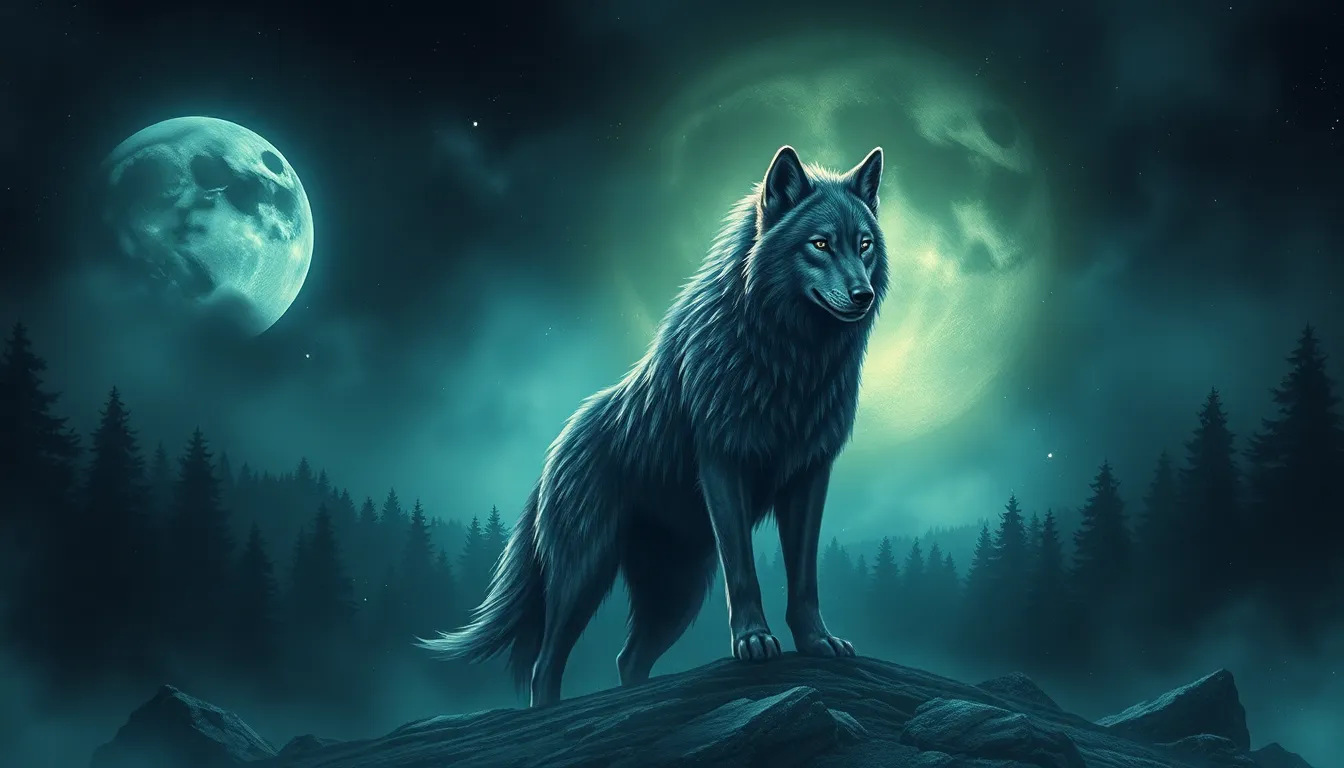The Kingdom of the Wolf: Myths of Loyalty and Instinct
I. Introduction
The wolf has long been a powerful symbol across various cultures, representing different facets of human emotion and experience. From ancient myths to modern storytelling, wolves embody themes of loyalty, strength, and instinct. Understanding the behaviors that underpin these themes is essential for unraveling the myths and truths surrounding this fascinating creature.
This article will explore the rich tapestry of wolf mythology, the social dynamics of wolf packs, their instinctual behaviors, and the lessons we can learn from their loyalty. It aims to provide a deeper understanding of the wolf beyond the myths and fears that often surround them.
II. The Wolf in Mythology
Wolves have been featured prominently in myths and folklore throughout history. Their presence in storytelling often reflects humanity’s complex relationship with nature.
A. Wolves in ancient myths and folklore
- Roman and Greek mythology: In Roman culture, the she-wolf that nursed Romulus and Remus symbolizes the founding of Rome and loyalty to one’s kin. In Greek mythology, the god Apollo was associated with wolves, embodying both ferocity and protection.
- Native American legends: Many Native American tribes view the wolf as a teacher and a guide, representing loyalty, courage, and the importance of family. The wolf is often seen as a guardian of the land.
B. Symbolism of the wolf in different cultures
- Loyalty and guardianship: Wolves are often seen as loyal companions, exemplifying strong familial bonds and protective instincts.
- Fear and ferocity: Conversely, the wolf also represents fear and danger, often being portrayed as a ruthless predator in various tales.
III. Understanding Wolf Pack Dynamics
To understand the loyalty and instinct of wolves, it is crucial to examine the structure and dynamics of a wolf pack.
A. Structure of a wolf pack
- Hierarchical roles: A wolf pack typically consists of an alpha pair, beta wolves, and omega individuals. The alpha pair leads the pack, while the beta wolves support them, and the omega serves as a stabilizing force.
- The significance of social bonds: The relationships within a pack are vital for its success, influencing hunting strategies and survival.
B. Loyalty within the pack
- Cooperative hunting and shared responsibilities: Wolves work together to hunt, showcasing their loyalty to one another and the importance of teamwork.
- The role of maternal instincts in pack survival: Female wolves exhibit strong maternal instincts, ensuring the survival of their pups and the continuity of the pack.
IV. Wolves and Instinctive Behavior
Wolves exhibit a range of instinctive behaviors that are crucial for their survival.
A. Instincts versus learned behaviors
- Navigational skills and territory marking: Wolves have a keen sense of direction, which aids in navigating their territories and establishing boundaries.
- Communication methods: Wolves use vocalizations such as howls, growls, and whines, alongside body language, to convey information and strengthen social bonds.
B. The impact of environment on instinctual behavior
- Adaptation to different habitats: Wolves adapt their hunting strategies and social structures based on their environment, whether they are in forests, tundras, or grasslands.
- The influence of human interaction on wolf instincts: Encroachment of human activities can alter wolf behaviors, leading them to change their hunting patterns and social interactions.
V. The Myth of the Lone Wolf
The “lone wolf” stereotype is prevalent in popular culture, but it doesn’t accurately reflect the realities of wolf behavior.
A. Origins of the “lone wolf” stereotype
This stereotype likely arose from the observation of solitary wolves, which are often seen as outcasts or loners.
B. Realities of solitary wolves in nature
While some wolves may roam alone, they are typically in search of a mate or territory rather than being permanent loners.
C. The importance of social bonds for survival
Wolves are social animals that thrive in packs; their survival is closely tied to their social structures and teamwork.
VI. Wolves in Modern Culture
The portrayal of wolves in literature and film significantly shapes public perception.
A. Representation of wolves in literature and film
- Positive portrayals: In many stories, wolves are depicted as loyal companions and protectors, symbolizing fidelity and bravery.
- Negative portrayals: Conversely, wolves are often represented as dangerous predators, embodying fear and unpredictability.
B. The impact of media on public perception of wolves
Media portrayals can lead to misconceptions about wolves, influencing public attitudes towards their conservation and management.
VII. Conservation and the Role of Wolves in Ecosystems
The ecological role of wolves is critical for maintaining balance within ecosystems.
A. Ecological importance of wolves in maintaining balance
Wolves help regulate prey populations, which in turn supports a healthy ecosystem and biodiversity.
B. Conservation efforts and the fight against wolf persecution
Efforts to protect wolves include legal protections and education to combat myths that contribute to their persecution.
C. The relationship between wolves and biodiversity
Wolves play a pivotal role in fostering biodiversity by maintaining the health of ecosystems through their predatory behavior.
VIII. The Science of Loyalty in Wolves
Recent studies have shed light on the complexities of loyalty and social behavior in wolves.
A. Studies on loyalty and social behavior in wolves
Research shows that wolves exhibit strong social bonds that are crucial for pack cohesion and survival.
B. Comparisons with loyalty behaviors in other species
Studies have compared wolf loyalty to that of other social animals, highlighting the unique aspects of their social structures.
C. The role of genetics versus environment in loyalty
Both genetic predispositions and environmental factors contribute to the loyalty observed in wolves, emphasizing the interplay between nature and nurture.
IX. Lessons from Wolves: Insights for Human Relationships
The social dynamics of wolf packs offer valuable lessons for human relationships and community building.
A. The parallels between wolf pack dynamics and human social structures
Humans can learn from the loyalty, cooperation, and strong social bonds exhibited in wolf packs, applying these principles to strengthen their own relationships and communities.



